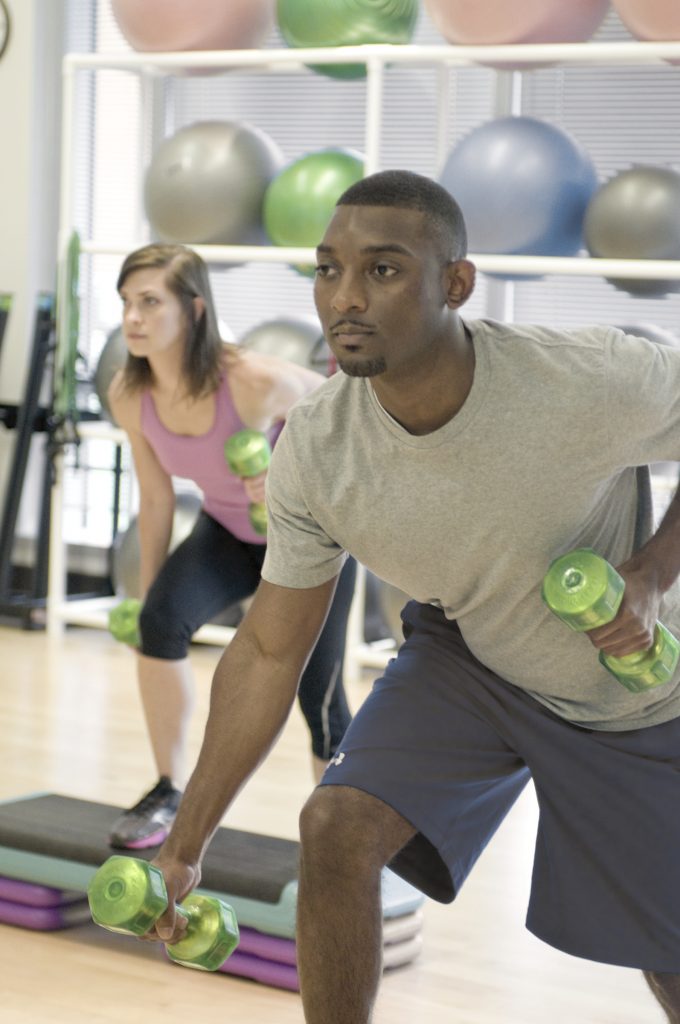2 1.2 Physical Activity Terminology
Physical activity literacy begins with a clear understanding of the terminology utilized within the field. While some terms are used interchangeably, it is important to recognize the nuanced differences which exist in physical activity vocabulary. Review the following terms, and complete the accompanying comprehension checks.
Physical Activity: Any bodily movement that is produced by skeletal muscles and requires energy expenditure (calories “burned”). Physical activity is often divided into four domains: Domestic/household, transportation, occupational, and leisure-time (Caspersen, Powell, & Christenson, 1985; Physical Activity Guidelines Advisory Committee, 2008). Examples of the various domains of physical activity are as follows:
- Domestic/household: vacuuming, completing yardwork, clearing the dishes
- Transportation: biking to work, walking to school, rollerblading to the store
- Occupational: lifting or hauling weights for work or engaging in exerting physical activity during a work-related task
- Leisure-time: physical activity which is completed in an individual’s leisure-time (i.e., swimming, jogging, hiking, dancing, participating in weight-training regimens, etc.)
Note: Exercise is a subcategory of physical activity, and is included in leisure-time activity.
Comprehension check:
Provide an example of physical activity in each of the four domains mentioned above. Could you increase your physical activity in one of the domains?
ADL: ADLs are activities of daily living, which often involve physical activity. ADLs may often be interchanged with the term “lifestyle activities.” Some examples of ADL’s include: gardening, doing dishes, mowing the lawn, or walking to school (Centers for Disease Control and Prevention, 2015).
Exercise involves repetitive bodily movement, and is performed with the goal to improve or maintain one or more components of physical fitness. Exercise: A subcategory of physical activity that is planned and structured. Exercise involves repetitive bodily movement, and is performed with the goal to improve or maintain one or more components of physical fitness (Caspersen, Powell, & Christenson, 1985; Centers for Disease Control and Prevention, 2015). Two broad categories of exercise include aerobic and anaerobic exercise.

Aerobic Exercise (Oxygen is utilized in the energy-generating process for muscle contraction):
Exercise which:
- primarily uses the large muscle groups of the body
- is typically performed continuously
- can be maintained for a longer duration of time than anaerobic exercise
- improves cardiorespiratory endurance (Physical Activity Guidelines Advisory Committee, 2008).
Several examples of aerobic exercise include jogging, rowing, and biking.
Anaerobic Exercise (Oxygen is not utilized in the energy-generating process for muscle contraction):
Exercise which uses muscles at high-intensity for shorter bursts of time (Physical Activity Guidelines Advisory Committee, 2008).
Several examples of anaerobic exercise include short sprints and heavy weight lifting.
Comprehension check:
List several exercises that may be defined as aerobic. Next, list several exercises that are considered anaerobic in nature. Provide evidence to support your categorization of each type of exercise
Resistance Training (Muscle-Strengthening Activities): Exercise which is primarily intended to increase skeletal muscle strength, endurance, power, and mass (Physical Activity Guidelines Advisory Committee, 2008).

Flexibility Exercise: Exercise which is designed to improve full range of motion of the body’s joints (Physical Activity Guidelines Advisory Committee, 2008).
Physical Fitness: A specific set of attributes possessed by an individual, which allows her/him to perform physical activity with ease, and in the absence of undue fatigue. Physical fitness includes the following components:
- Cardiorespiratory Endurance (aerobic fitness)
- Skeletal Muscle Endurance
- Strength
- Power
- Flexibility
- Balance
- Movement Speed
- Reactionary Time
- Body Composition (Caspersen, Powell, & Christenson, 1985; Centers for Disease Control, 2015).
Note: Components of physical fitness will be covered further in upcoming content modules.
Physical Inactivity: A lack of physical activity; not meeting specific physical activity guidelines (Caspersen, Powell, & Christenson, 1985; Sedentary Behaviour Research Network, 2017).
Sedentary Behavior: As defined by the Sedentary Behavior Research Network (SBRN): any waking behavior characterized by an energy expenditure ≤1.5 metabolic equivalents (METs), while in a sitting, reclining or lying posture. The SBRN does not include sleep as a sedentary behavior Sedentary Behaviour Research Network, 2017).
Comprehension check:
In which situations do you believe sedentary behavior is not conducive to overall health? In which situations might some sedentary behaviors be positive? Please explain. Brainstorm several ways you can incorporate physical activity into your daily routine. (Hint: take a physical activity break, such as a quick walk around the library, during your studying sessions).
Works Cited
Caspersen, C. J., Powell, K. E., & Christenson, G. M. (1985). Physical activity, exercise, and physical fitness: definitions and distinctions for health-related research. Public Health Reports, 100(2), 126.
Centers for Disease Control and Prevention (2015). Physical activity: Glossary of terms. Retrieved from https://www.cdc.gov/physicalactivity/basics/glossary/
Physical Activity Guidelines Advisory Committee. (2008). Physical activity guidelines advisory committee report, 2008. Washington, DC: US Department of Health and Human Services, 2008, A1-H14
Sedentary Behaviour Research Network (2017). SBRN Terminology Consensus Project. Retrieved from http://www.sedentarybehaviour.org/sbrn-terminology-consensus-project/

